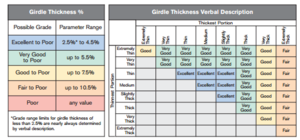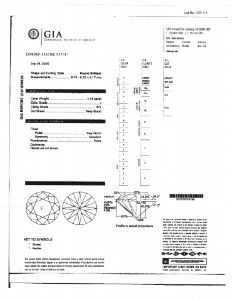- Joined
- May 1, 2008
- Messages
- 3,563
RE: VG Cut Grade
You got it. It's precisely 0.1% thicker than the weight-ratio permitted for EX. The interesting thing is that, even if the girdle was reduced by 0.1% uniformly around the diamond, it would remain 1.16 cts.Yssie|1378420403|3515283 said:I assume 4.5% girdle thickness?





300x240.png)